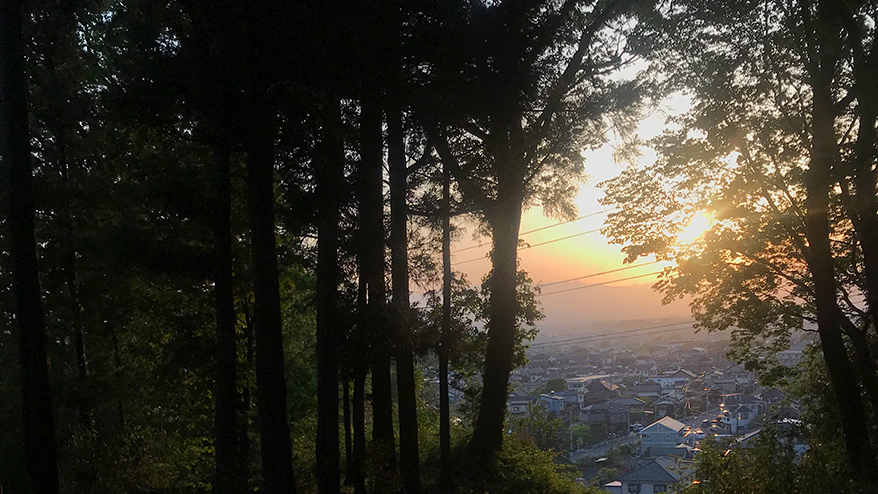品質管理部の梶原です。
この時期はちょっと寒い品管部屋で日々品質向上に勤しんでおります。
車を所有しているので、折角ならと週に1回は乗るようにしている。
買い物だけの時もあるが、ドライブもする。
ドライブで思い出すのは、子供の頃、父の車で通った新宿の高層ビル街。車窓から顔を出さないとてっぺんが見えないくらい高いビルを見上げ、近未来的な光景に驚いたのを覚えている。
自ら運転するようになっても、新宿を通る度に思い出す。コンクリートジャングルとは言い得て妙だと思いながら。
コンクリートジャングルを彷徨うのも一興だが、気づけばよく訪れる先は自然を感じる遠出が多い。
そんなドライブの記憶を備忘録として記す。
首都高K6(高速神奈川6号川崎線)
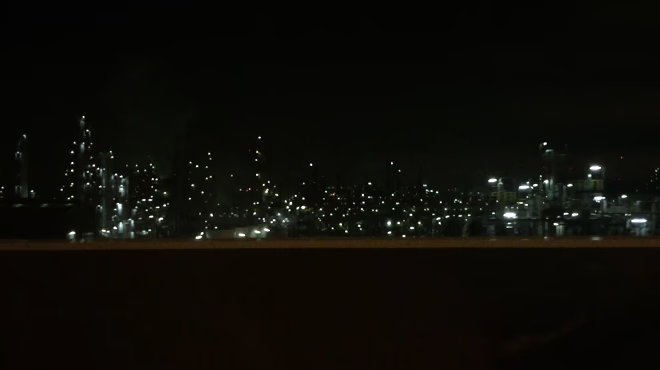
首都高K6を走る車窓から工場地帯を望む
首都高速道路の大師JCT~川崎浮島JCT。
路線沿いにある工場地帯の夜景を一望できる。言うまでもなく車でしか行けないので、ドライブに最適。
スチームパンクなビジュアルと吹き出す炎がブレードランナーを彷彿とさせる。
YouTubeの首都高速道路株式会社公式チャンネルでも紹介されている。
一般道から見上げても迫力があって良い。
自然には無い人工ならではの良さがある。
熱海海上花火大会
1952年(昭和27年)に始まった、熱海湾で通年十数回開かれる花火大会。
冬の澄んだ夜空に上がる花火は、夏のそれとは違った趣がある。
打ち上げ場所が観覧エリアから近く、視界を埋め尽くす花火と、山に囲まれた熱海湾内にこだまする迫力ある音が特長。
会場全体から打ち上げるフィナーレの「大空中ナイアガラ」は消え方まで美しく感動的。
30分程度なので立ち見でも楽しめる。
高台にある熱海城から観るのも一興。
ドローンを花火の中まで飛ばし撮影された公式プロモーションビデオ
2017熱海海上花火大会公式PV
既に2019年のスケジュールも発表されている。
姫の沢公園
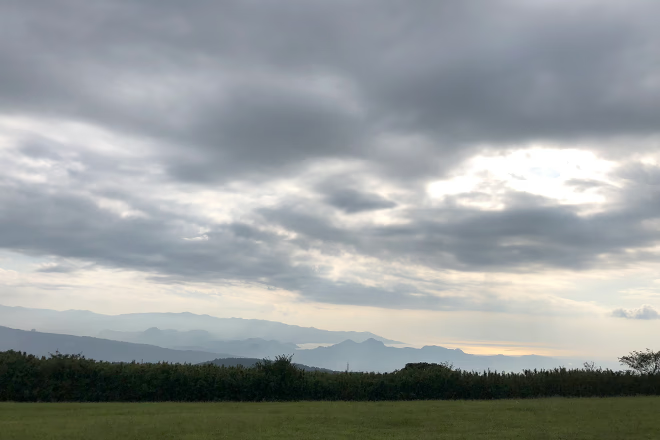
姫の沢公園~十国峠ケーブルカーの十国峠駅へ続く道中から伊豆スカイラインを望む
静岡県熱海市にある都市公園100選指定の総合公園。
山の斜面にあり、登山気分を味わえる。
ハイキングコースの他にアスレチックコースもある。名前の通り園内に沢があり、沢沿いを通るコースは清々しい。
頂上からはほぼ360度見渡せ、後述の玄岳ドライブインも見える。
玄岳ドライブイン
静岡県の伊豆半島北東部の山稜にある玄岳(くろたけ)の山頂付近にあり、見晴らしの良い伊豆スカイラインを走っていると突然現れる、見慣れぬ外観の建物は所謂廃墟。爽やかな景色とのギャップが面白い。
かつて熱海市にあった熱海サボテン公園と繋がるロープウェイの駅だったらしい。
Web上を検索するとブログ等が複数出てくる。
河津七滝(かわづななだる)
河津七滝(かわづななだる)は大滝、出合滝、かに滝、初景滝、蛇滝、海老滝、釜滝、の7つの滝からなる。遊歩道には吊り橋や展望デッキがあり、散歩しながら趣の違う滝を楽しめる。
ここの入口にある河津七滝観光センターには、わさびを練りこんだバターと粒餡をパンに挟んだ「あんバタわさこ」という変わったパンがある。
わさびソフトクリーム(普通のソフトクリームにわさびを乗せたものではなく、わさび味)もある。ここから下田街道を北上したところにある道の駅「天城越え」にはどちらのタイプもある。
あしかがフラワーパーク
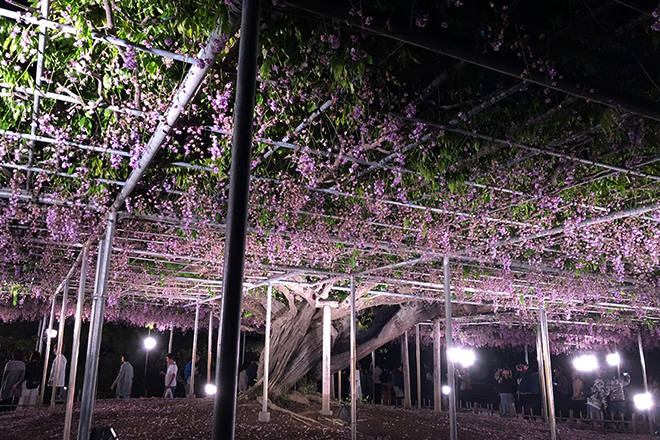
樹齢150年の大藤のライトアップ
栃木県足利市迫間町にある花のテーマパーク。
藤で有名。野田藤、うすべに藤、むらさき藤、長藤、八重の藤、白藤、きばな藤(マメ科キングサリ属)が、藤棚、トンネル、スクリーン仕立てに咲いている。
藤ソフト、藤スムージーはしっかりと藤の香りが感じられ美味。
藤だけでなく、1年を「早春」「春の花祭り」「ふじのはな物語」「レインボーガーデン」「ブルー&ホワイトガーデン」「水に浮かぶ花の妖精たち」「パープルガーデン」「光の花の庭」の8つのテーマに分けており、四季折々の花を楽しめる。
開園時間は季節により、入園料は季節や花の咲き具合により変動する。
たんばらラベンダーパーク
群馬県沼田市玉原高原にあるたんばらスキーパークのオフシーズンにオープンする、ラベンダーで有名なテーマパーク。5万株のラベンダーは関東最大規模。ラベンダーの種類によって早咲き・中咲き・遅咲きとあり、開園期間が長い。
ラベンダーソフト、たんばら産ラベンダーを使ったオリジナルグッズがある。
入園料は開花状況により変動する。
日本国道最高地点
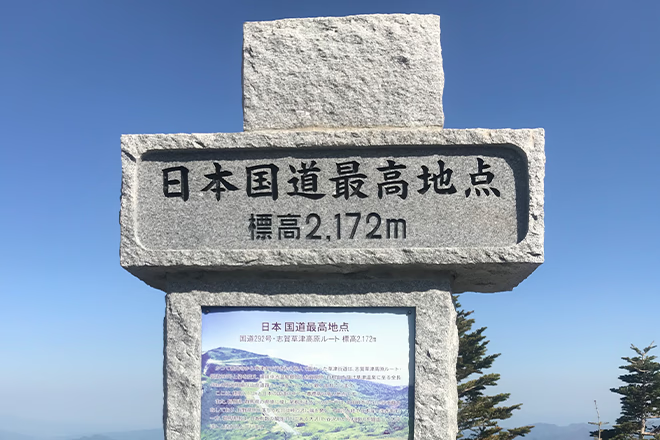
駐車場の片隅にある日本国道最高地点の標識
その名の如く、国道で最も標高の高い場所。
国道292号線「志賀草津高原ルート」沿いにある。
昼は草津方面を見渡すパノラマビュー、夜は冷え込むが星の数が凄い。雲海を観に行く人も多い。
雪のため11月半ば頃から冬期閉鎖がある。東京方面からだと草津経由が最短ルートだが、白根山の噴火警戒レベルが引き上げられると通行止めになる区間があり、迂回しなくてはならなくなる。4月半ばに冬期閉鎖が解除されると雪の回廊をドライブ出来る。
国営昭和記念公園
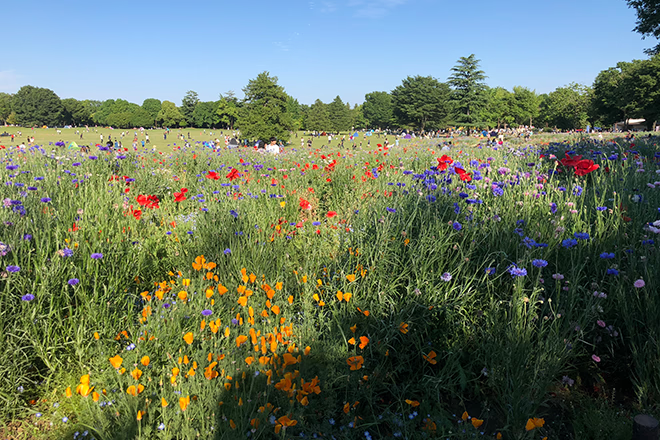
「みんなの原っぱ」(写真奥)の周りには多くの花が植えられている
東京都立川市と昭島市にある国営公園。
駐車場も相当広いがそれ以上にだだっ広い「みんなの原っぱ」の開放感が心地よい。
花が植えられているエリアが多い。
盆栽苑もある。
秋にはいちょう並木が明治神宮外苑に負けずとも劣らない黄金色のトンネルを作る。
国営ひたち海浜公園
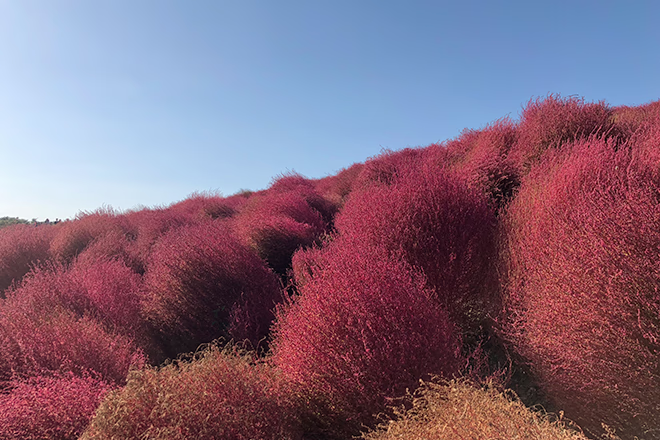
みはらしの丘に広がるコキア。周りにはコスモスも植えられている
茨城県ひたちなか市にある国営公園。
春のネモフィラ、秋のコキア等で有名。見頃がピークを迎えると常磐自動車道が大渋滞することもある。
開園面積は昭和記念公園より広く、7つのエリア(みはらしエリア、樹林エリア、草原エリア、砂丘エリア、西口エリア、南口エリア、プレジャーガーデンエリア)に分かれている。
プレジャーガーデンエリアには観覧車もある。
みはらしエリア内にあるみはらしの丘からは園内と太平洋が一望できる。
野山北・六道山公園
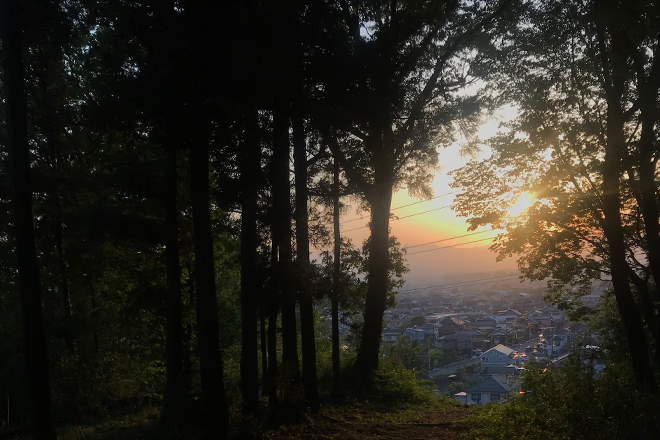
散策路を抜けると夕日に照らされた町並みが見える
東京都武蔵村山市から瑞穂町にかけての狭山丘陵にある、都立で最大の都市公園。
駐車場も点在しており、目的地の近くまで車でアクセス可能。
360度見渡せる展望台の他、ビューポイントが多数ある。
アスレチックもある。
尾根道を歩くと木漏れ日を満喫できる。
東京都檜原都民の森
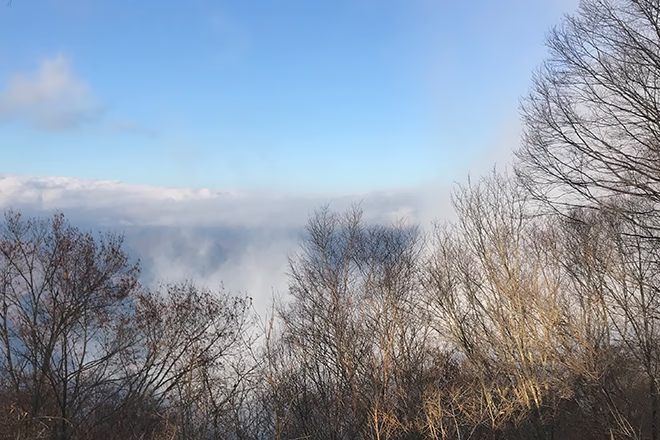
山頂から奥多摩湖方面(北)を望む
東京都西多摩郡檜原村にある。奥多摩三山の最高峰、三頭山(みとうさん)への登山口のひとつ。三頭山はその名の如く西峰(1,527m)・中央峰(1,531m)・東峰(1,528m)と3つの頂上がある。晴れた日には富士山も見える。
森林セラピーロードに認定された「大滝の路」にはウッドチップが敷かれており歩きやすい。
御岳渓谷
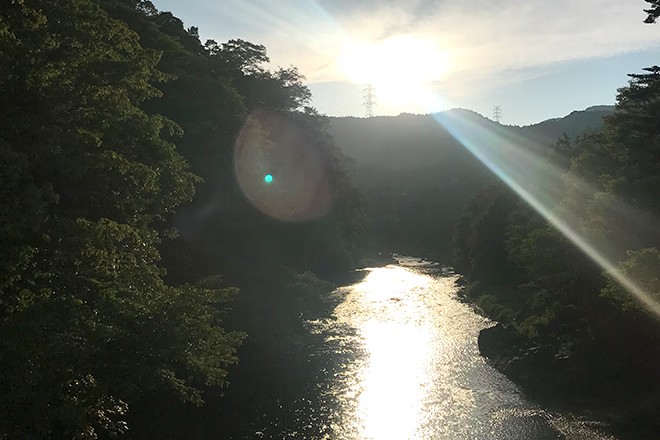
橋から多摩川を望む
東京都青梅市の多摩川上流にある渓谷。ここの渓流は環境省選定の名水百選に選ばれている。
両岸に約4kmの遊歩道があり、春は新緑、秋は紅葉を楽しみながら散策できる。カヌーやラフティングもできる。
まだ見ぬ風景を求めて
目的地までの道中も良い景色に感動したり、面白い光景に遭遇したりと楽しい。ドライブしようと思うと少しでも都心を離れたくなるのは、そんな感動や遭遇を求めているのかもしれない。現地に住む人々にとっては日常なのだろうと思いつつ、自分にとっては非日常体験。それが自分の日常を支えている気がする。
